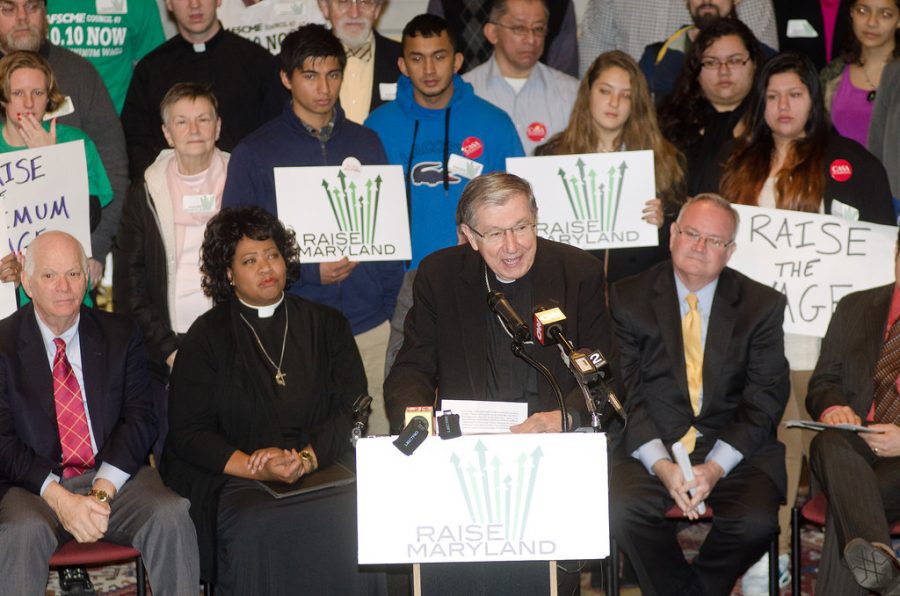Maryland’s proposed minimum wage increase benefits the economy
February 27, 2019
Recently, on Monday, a bill increasing Maryland minimum wage to 15 dollars per hour was sent to the Maryland House of Delegates, reigniting the debate on whether the minimum wage should be raised. This proposed raise would occur in increments over the next ten years, and it would increase the state minimum wage from its current 10.10 dollars per hour, though areas, such as Montgomery County, that already have plans to raise the minimum wage to 15 dollars would be unaffected. While controversial, ultimately, raising the minimum wage to 15 dollars per hour is a step in the right direction for both workers and the economy.
The primary purpose of a minimum wage is to protect employees from the dangers of unrestricted competition by creating a minimum standard of living. In the past, the minimum wage was adjusted to account for inflation, but in recent years, inflation has risen faster than the minimum wage. Business Insider claims that if the minimum wage had been adjusted for national growth, today’s minimum wage would be $11.62, over a dollar greater than the current minimum wage.
Furthermore, in Maryland specifically, inflation rates are projected to increase by 2.12 percent by 2023, and even more by the time the proposed minimum wage would be implemented in 2025. As a result, an adjusted minimum wage is imperative to ensure a decent quality of life for all.
Moreover, there are a multitude of examples demonstrating that the current minimum wage, $10.10, is not enough to make ends meet in a state like Maryland, which CNBC found to be the seventh most expensive state to live in. According to MIT’s living wage calculator, to support a household consisting of one adult in Baltimore, the smallest possible household unit, one needs a wage of 13.69 dollars per hour, which is substantially greater than the current minimum wage. The disparity between the living wage and the minimum wage only increases as the family size increases, further highlighting the need for a higher minimum wage.
Critics claim that raising the minimum wage will reduce job growth, but in reality, the contrary is actually true. Not only does a raised minimum wage protect people from the dangers of a rapidly fluctuating economy and falling into extreme poverty, but it also boosts the economy. According to the Federal Reserve Bank of Chicago, a mere $1.75 per hour increase in minimum wage can result in an additional $4.8 billion dollar growth in aggregate spending, increasing both the GDP and overall job creation. In addition, the $1.75 is only a fraction of Maryland’s proposed $4.90 increase. A greater increase in the minimum wage should result in more economic growth and therefore, be more beneficial to all.
State governor Larry Hogan has expressed concern with the bill, primarily worried about how this bill would impact Maryland businesses. Nearby states such as Virginia have an incredibly low minimum wage at $7.25 an hour, raising fears of businesses turning to nearby states instead of Maryland. However, Montgomery County demonstrates that his concerns are unfounded.
Montgomery County already implemented plans to raise the minimum wage to $15 over the next couple of years. Despite fears that this would stagnate economic growth, both job and wage growth have kept up with national estimates, creating few consequences for businesses in the area. Moreover, a Baltimore Sun reader writes in a letter to the editor, “Using the governor’s logic, we should lower the minimum wage to $6 per hour to draw business from Virginia.” The minimum wage is meant to protect us from destructive competition to unacceptable living conditions, not cause it.
Currently, 2.7 percent of Maryland workers earn the minimum wage, and Maryland’s poverty rate is 9.3 percent. The current minimum wage is not sufficient, and we must increase it to help American workers.




